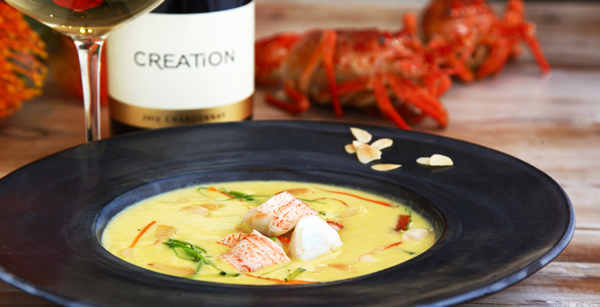Chardonnay occupies a unique position in the world of wine, both because of the wide spectrum of styles to which it easily and successfully adapts and because of the intensity and complexity that are hallmarks of the finest examples of this widely produced variety.
The potential for truly exceptional pairings with Chardonnay is attractive, but the complexity and range of styles can also make it a daunting task. With a focus on food-friendly wines and producing a multi-award winning Chardonnay, Creation Wines has compiled the following points to make pairing Chardonnay as simple and successful as possible:
1. Progression
Progression is one of the central precepts of any pairing exercise – it is the process of moving from lighter, less complex wines to heavier, more complex wines as the meal progresses. The following rules cover most situations when progression order is being established:
White wine before red
Light-bodied before full-bodied
Low alcohol before high alcohol
Dry wine before sweet wine
Younger wine before vintage wine
Simpler wine before complex wine
Humble wine before grand wine
Chardonnay, especially oaked Chardonnay, tends to have a fuller bodied palate and many layers of aroma and flavour – often evolving and developing new aspects in the glass, over time. For this reason Chardonnay, especially vintage Chardonnay, is usually the last wine served before moving on to red wines and can be served with rich and complex dishes quite easily.
2. If it grows together it goes together
Another great tip when pairing food to wine is the idea that regional dishes tend to work perfectly with wines and wine styles that are endemic to that region. For instance, what could be better with the Creation Chardonnay 2013 than a fresh crayfish from Walker Bay, simply yet deliciously cooked.
3. Let your senses guide you
Pairing food to wine is not always a simple matter of looking for similar flavour profiles to complement the wine. Several senses are stimulated and factors such as weight, volume and texture are integral to the way your palate interprets the wine’s mouth-feel. There is also the dichotomy between traditional horizontal pairing (where one seeks to layer similar flavours) and the more radical, vertical pairing which seeks to use contrast (whether it be contrast in taste, texture, temperature – even colour) to effect a pairing.
more on creationwines.com




